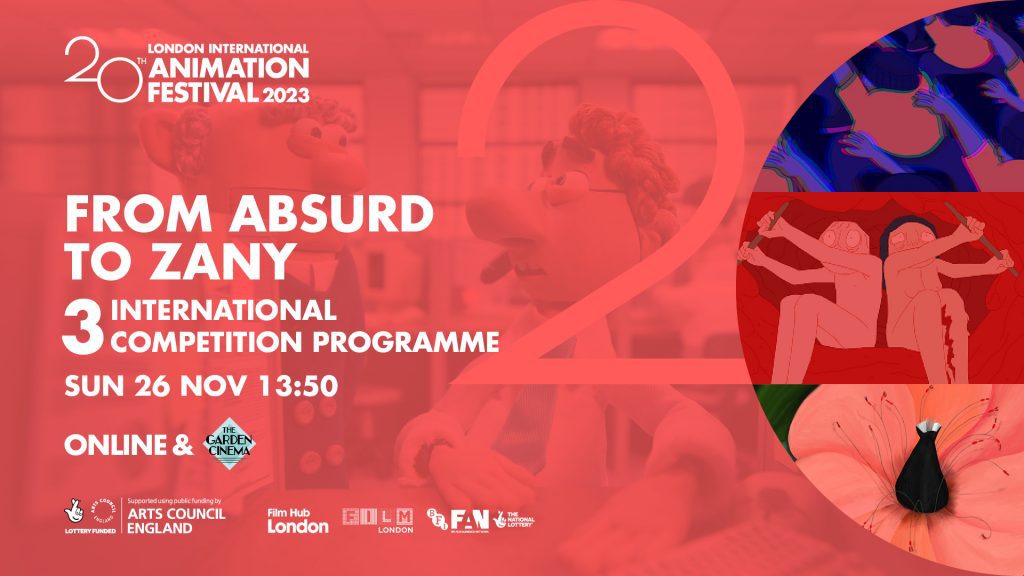
It’s not that complicated when you think about it.
Animations, especially those striving to break conventions, are suggestive of experiences of space not wholly held captive by narrative. They can achieve an evocation of space that captivates us as it makes meaning, giving locations for movements and gestures, but which also allows the surprise of space emerging in a process of change
Ayish Wood, ‘Re-Animating Space’
The Animation Studies Reader (Eds) N. Dobson, A.H. Roe, A. Ratelle & C. Ruddell
Entering spaces might just be the most common thing all living creatures do. In so many ways all of our worlds are nothing much more than a bunch of made, natural and contrived spaces strung together to give us all something to do, help make our lives function and take our money off us.
Spaces can be as real and concrete as what is beyond your front door – or behind it if you’re coming home. Spaces can be as curated and contrived as an Ikea store or as packed with meaning and depth as a museum or a church. A theatre set is a standing example of manufactured reality – albeit a temporary and ultimately disposable one.
A space can be made up of the unending weightlessness of the virtual. For example, an email announces the identity of the sender, the subject that it might be about and perhaps hints at the contents, but the full meaning of it all won’t be revealed until it is opened fully and its full contents are given the space to reveal themselves.
Most days most of us need to do something with our feet, and to do that each foot may need to go into an earnest sock, a heavy boot, a lightweight sneaker or, for those work-at-home days, some hideous fluffy thing that looks like a reject from a Gremlins movie audition. All of them are a handy space for your feet.
The spaces that fill our real world can move or stay still, they can behave predictably or throw surprises at us; they can be welcoming, foreboding, unusual, drab, within our control or out of our reach; they can belong to us or be the spaces of others we wish (or are compelled) to visit. They could be built with a hammer and nails, paint and pixels, words and sentences or simply the power of minds.
Relative to the speed at which it will be consumed every animated film is actually created in incredibly slow motion. To some extent this is true of even live-action films but at least the actions in a live-action film are generally generated and captured in something akin to real time. Not so with animation. If a live-action director wants somebody to run across a road they simply send off the chicken and ask that the actor follow it, hopefully simultaneously achieving the action shot they need and answering an age-old question at the same time. If you want to do the same thing in animation, the carnivores among the animation team are going to be better off cooking the chicken and using it for nutrition because it is going to be a very long night of drawing, colouring and rendering to get the animated character across to the other side.
In the hurried snail’s pace that is the typical animator’s work environment, the little stuff can get overlooked. For example, how is the audience going to receive what is being played out before them. The audience is looking for clues to understand that little stuff. They can’t help it, they’re hardwired that way. It’s the baked-in evolutionary mindset that prevented them from being run over when they crossed the road on the way to the cinema. In the same way we all scan any given space for the clues we need to function successfully or safely within it, the audience for any given animated film is subconsciously sifting through a virtual rolodex of mental cue cards to try and understand the space they are being drawn into.
The clever (or instinctive) animator knows this is the perfect time to help them out, mess with their minds, set-up false assumptions, build mystery or create a unique reality. This process of clue-sifting leads to a constructed understanding in the mind of the viewer, and is sometimes referred to as ‘animate vision’.
In his book Animation – Process, Cognition and Actuality (pp. 106-107) Dan Torre credits Dana Ballard as first proposing this theory and states that it calls for:
a consideration and linking of how we look at things, with our cognition of those things. We do not simply look at a room, take a mental ‘photograph’ of it and work from that stored image. Our vision is much more akin to our cognitive processes; it is continually in process”.
(2007)
However, in the book Unsung Heroes of Animation, Chris Robinson – the Artistic Director of the Ottawa International Animation Festival – drops a match on that pile of fuel, writing:
“what we inhale depends on our own temporal and spatial positions. Each of us enters through a different door, at a different time, in a different setting. We leave with fragments – of thoughts, memories and emotions unravelling uniquely into our compartments of conspicuous memory and understanding”.
(2006)
It’s time to cut to the chase. Arguably every frame of every (non-abstract) animated film is set in a space of one type or another. The spaces can be defined by amazing buildings, bizarre environments, intricate constructions or simply be as spatially ephemeral as the sum emotionality of the characters. All are likely to have been designed with passion, ingenuity and a desire to present something different, narrative-defining and captivating for the audience. The incredibly imaginative and unique level of ‘animatedness’ evident in the ‘space making’ of many of the films in this programme is next level stuff though and, to my biased eye at least, the compendium element that most strongly binds them together and creates the most powerful (perhaps only) common thread that runs through this screening – although a larger than normal quota of odd animals do seem to be popping up.
Czech animator Filip Diviak’s new film My Name Is Edgar And I Have A Cow is a gold standard, 12-step masterclass in the simple, concisely demarcated roll-out introduction of one space to another to another in the service of explaining the near-inexplicable…. that is, who is Edgar and how come he’s living with a cow. In the span of about 20 succinctly crafted and often cleverly explained introduced and explained shots we are, in effect, introduced to Edgar, taken on a tour of the most critical and relevant elements of his life and by the end of the sequence (a little more than two minutes into the film) we understand the now ‘logical’ pathway to how come he shares his apartment with a cow. Much of the definitive action illuminates the bigger, more obvious markers in the narrative arc to get us there but it’s the way Diviak constantly introduces us to one space after another and the way he purposely places Edgar within that space to contextualise it’s storytelling role in explaining Edgar as a thinking, feeling character. It is through seeing these different spaces in Edgar’s world and understanding their meaning and purpose to him that we build an empathetic bridge to finding him believable and relatable, even as he moves forward and adopts a cow.
This combination of introducing and having an audience build a relationship with a lead character via hints garnered from seeing them living in the spaces of their world is similarly central to getting us on board Lachlan Pendragon’s endlessly intriguing film An Ostrich Told Me The World Is Fake And I Think I Believe It. Pendragon is unrepentant regarding the length of the title and the headaches it causes festival website and catalogue design templates – I once put it to him at a live Q&A and quickly realised that I was the only one in the entire cinema that cared about this…. these days I’m old and wise enough to know when to fold ‘em. One of the loveliest guys you could possibly hope to meet (his lack of empathy for festival website designers aside), his film was made more or less single handedly in a small Queensland (Australia) apartment during lockdown and, emerging fully formed, immediately scaled the heights on the indie animation circuit, scoring a Gold at the Student Academy Awards and pulling down a nomination to the Oscars themselves.
Although we’re preaching to the converted here, it’s worth just taking a moment to remind everybody that this is all – ALL – handmade. One frame at a time puppet animation. Move an arm, turn a head, bend a back, shoot. Repeat…… 16,000 times – literally! Just sayin’!
One of the hallmarks of Pendragon’s film though is the way specific types of framing are utilised to create and define otherwise nondescript or non-distinct spaces. To some extent, it’s a very clever inversion of the cinematic process itself, turned around to face an audience and make them aware of the space shaping decisions any director of photography makes normally unheralded. In turn, this ramps up the potential for the story and the lead characters to remind us in a kind of useful but ‘fluid’ narrative focus that their very reality is being tested, strained and called into question before their very eyes and ours.
I don’t know what constitutes an especially good day for you but for me it’s the realisation I’m about to see a new Stephen Irwin film. Irwin never disappoints – never! That’s not the same thing as saying his films always make immediate sense straight out of the can but that’s part of the charm and excitement of knowing a new one is one click away. His latest – World To Roam – takes us by the hand (or eyes or some other random body part) and literally leads us directly into the strange and otherwise secret space that his film is situated in. These first few seconds are as simple and enlightening as they are complex and confusing. Are we underwater? Is this moment of transient introduction and space-entering critical to the film or simply a zone we have to move through to get to our seats before the action proper starts? Is it dark because that is critical to the production or simply because the lights aren’t on in this intermediary space?
The good news is that Irwin has created a film that allows each of us to arrive at our own answers to these questions and be right – whatever the answer we nominate. Once the film comes up to speed and once we have settled in to the weird world and the bizarrely off-kilter character’s he has populated that world and all the spaces within with, the capacity for almost infinite interpretation cracks wide open in that way that Irwin mastered more or less from the beginning of his time as an animator. He remains an utterly unique animator whose gorgeously ghostly, other worldly oeuvre is still very much on the rise.
The approach to approaching created spaces could hardly be more opposite as we enter the world(s) rendered for our challenging contemplation in 7 Missing by Yuval Katz. It’s another film with a challenging title – I’ll leave it at that for now and move on but you will see what I mean when you watch it…. it doesn’t take much to confuse festival programmers sometimes, that’s all I’m sayin’! Each space we are drawn into in 7 Missing is bigger, brighter, more expressive and, in many cases, more confusing than what immediately preceded it. Compounding this is Katz’s apparent relish at constantly morphing those spaces before our eyes often before we’ve had the chance to assimilate their meaning and properties into any kind of rational, linear understanding of where we are being taken. Somehow the characters seem to instinctively understand this constantly changing world and show not the slightest problem navigating within it which, in turns, simply adds a layer of intrigue to all that is happening. There is a slightly uneasy sense that builds that we are the only ones that are having trouble keeping up here, a sense that becomes more acute (and begins demanding more intense concentration to counter) as the film progresses. It is somewhat akin to sitting on a train rolling past place after place and with each change a thin slightly opaque veil is draped across our window at the same time as a strong light is turned on the scene as we approach it – simultaneously opaque and illuminated!
How do spaces affect our moods? Or our behaviours and reactions to stresses and stimuli? Certainly in this context there is pretty much no such thing as just a ‘room’ for example. A police interrogation room is going to make us think, act and feel differently than if the same room were to be transformed into a sweet shop. Taking a less extreme, more pliable example that most of us have probably experienced, what was a normal meeting one day becomes a job interview room the next and in the blink of an eye that arbitrary reassignment changes the way everybody in that room is going to feel, behave and react. Sometimes, and for some of us, the sense of what we will be facing in the space we are being compelled toward by one or another of life’s myriad forces provokes a change somewhere in the core of our being and even strategies to adapt that core being to brace for the experience we are heading towards.
With each layer of anticipation, defence and reaction we move further and further into the realm of the imagined and away from the world of simple physical reality. It’s a process that engages some of the most imaginative, creative and adaptive portions of our brain – probably only humans can pull this off. It can happen quickly – instantly even – or it can be something that travels a prescribed, thought-out planned pathway. It can be a sensible adaptation of the real or an amazing, unhinged journey into the unreal. And the further it becomes the latter the harder it gets to explain and describe it…… unnnnnnlesssss you’re an animator!
Well, Olivér Hegyi is an animator and his film, The Garden Of Heart chases the soul of a budding arts student down this rabbit hole and follows him through all of its twists and turns. Juhasz is an aspiring arts student facing the trauma and drama of being interviewed for entry into the Fine Arts Academy and he’s nervous. Fair enough, who wouldn’t be. He’s carrying some other baggage along for the ride too but his pre-planned strategy for coping is taking his imagination (and maybe him) into some pretty trippy spaces and the realities are starting to blur and mingle. Animation is supremely suited for depicting these intensely internalised, hyper-personalised spaces and here Hegyi has pulled out all the stops. Intense in its construction, free range in its application, The Garden Of Heart seems to bounce around as much as the mood and reactive demeanour of our fragile hero. There’s an art to maintaining artistic discipline while executing something this diverse and divergent and Hegyi pulls off this high wire act with absolute aplomb. Only animation could create this room with this view.
Somehow, some way, Nothing to Expect by Franz Impler is navigating the exact same terrain but in a mind bogglingly different way. Certainly the 3D animation gives it a different look and opens up different avenues for the exasperated, searching, inquiring anti-hero to run wild along. The language has a different expressive tonality about it too – more forceful and certain even as a few whiffs of vapour of doubt drift off it as it rushes by. But these two films share some sort of common emotional ancestor – it’s hard to put a finger on and I’m sick of staring at the screen reaching for the magic phrase that will lock in the argument for the prosecution. Probably time to withdraw and turn it over to the jury to decide – what d’ya reckon?

It is pretty rare to end a competition programme with a very short film but every once in a while one happens along that just seems like the perfect little piece to fill your head with as we send you all out of the cinema and into the bar. And hey this IS after all ‘Absurd To Zany’. Also what other film could possibly follow Herzog’s Chicken by Canadian filmmaker Lukas Conway. So here it is friends, a brief minute of focused chicken philosophy; another attempt at trying to connect with the thought process(es) of a notoriously silly bird. How close Conway gets here is up for grabs but it has the ring of truth about it and there’s a lot to be said for that but hats off to him for being willing to get down close with da boid and look inside its mind.

And if all that sounds a bit far fetched or a step too far down ‘Unserious Lane’ keep in mind that the great Norman McLaren once spent some time living with chickens inside their coop as he prepared for the making of his 1942 classic film Hen Hop. He wanted to better understand “henliness” he said. If it’s good enough for Norman……
by Malcolm Turner
From Absurd to Zany screens at The Garden Cinema and online Sun 26 Nov find out more




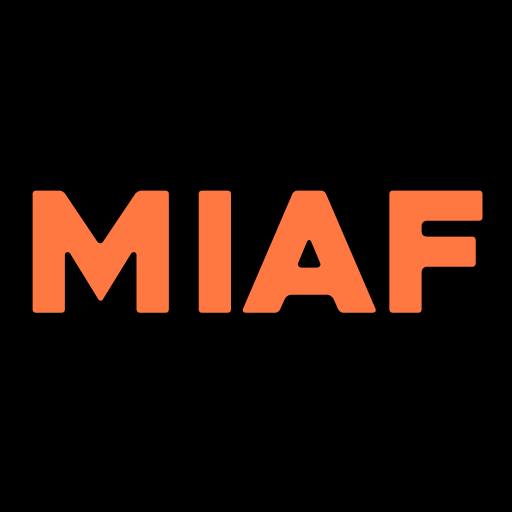

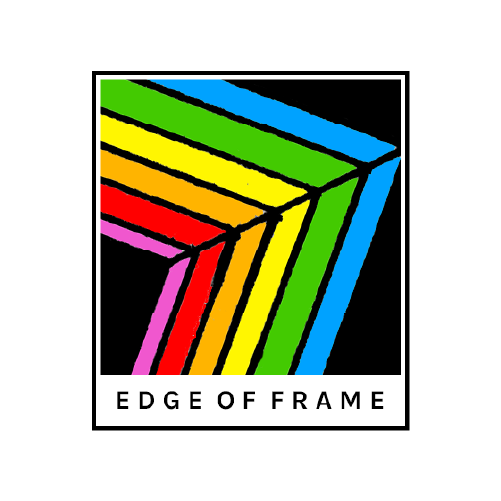



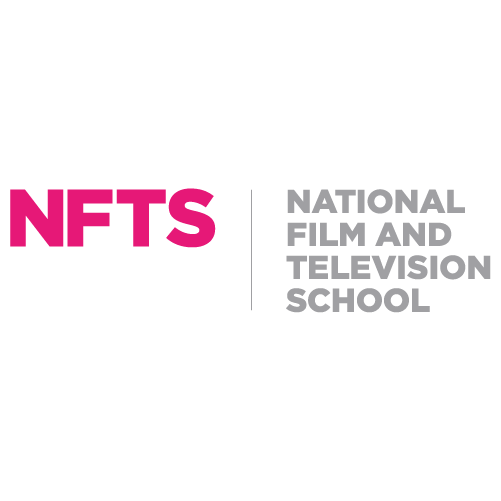
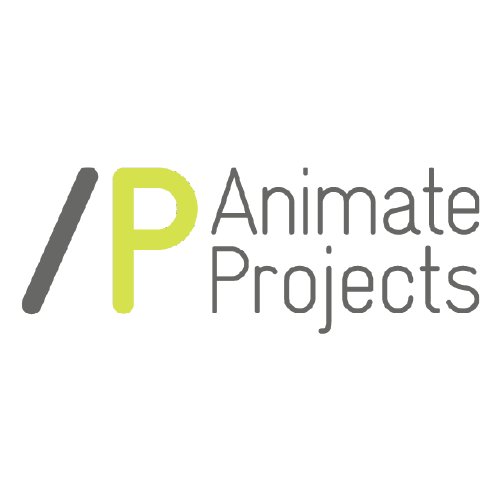

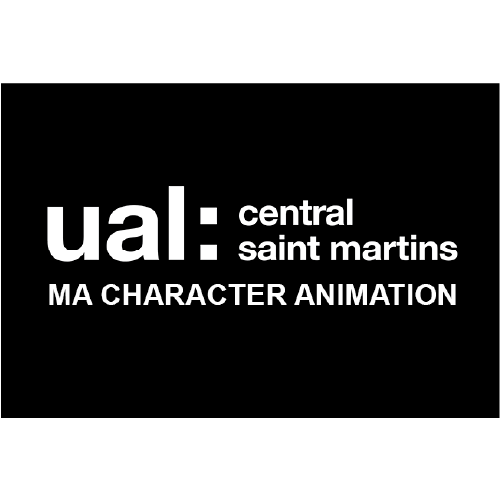


elavil numbness tingling
LIAF 2023 ARTICLE: FROM ABSURD TO ZANY – London International Animation Festival